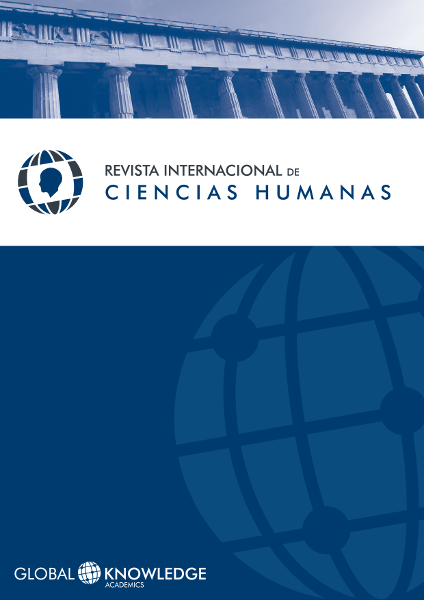Dracula in Film: Coppola and Shore. Comparative Analysis of a Literary Archetype
DOI:
https://doi.org/10.37467/gka-revhuman.v6.336Keywords:
Dracula, Vampire, CinemaAbstract
The vampire myth is one of the most attractive of all time. Since the creation of archetypes in literature, a multitude of tales have attempted to characterise this character’s idiosyncrasies. But it is undoubtedly film that has recreated and constructed the different nuances of this archetype. Dracula has become popular and come to form part of the community of the myth thanks to the different versions given by the seventh art. Coppola succeeded in giving it a humanising vision and since then there have been many constructions and deconstructions of the character. We propose taking a brief tour, starting with the characteristics of the monster created by Stoker, then taking in Coppola and his new vision and eventually arriving at Hollywood’s latest reinterpretation of the myth: “Dracula, the legend never told,” and analysing the characteristics of the character’s new reinvention.
References
Adam Mateu, C. y Azcárraga Pascual, M. (2001). Guia para ver y analizar Drácula de Bram Stoker. Valencia, España: Nau Llibres.
Aracil, M. G. (2009). Vampiros. Mito y realidad de los no muertos. Madrid, España: EDAF.
Ballesteros, A. (2000). Vampire Chronicle. Historia natural del vampiro en la literatura anglosajona. Zaragoza, España: Unaluna.
Bunson, M. (1993). The Vampire Encyclopedia. Nueva York, Estados Unidos: Crown Trade Paperbacks.
Cagiga, N. (2005). Cuatro reflexiones sobre el vampirismo. En Hilario J. Rodríguez (Coord.), Las miradas de la noche. Cine y vampirismo. Madrid, España: Ocho y Medio. Libros de cine.
Cueto, R. y Díaz, C. (1997). Drácula. De Transilvania a Hollywood. Madrid, España: Nuer.
Chul-Han, B. (2013). La sociedad de la transparencia. Barcelona, España: Herder. DOI: https://doi.org/10.2307/j.ctvt9k5qb
Da Conceição Ribeiro, A. (2009). Do vermelho-sangue ao rosa-choque: o mito do vampiro e suas transformações no imaginário midiático do século XXI. XXXII Congresso Brasileiro de Ciências da Comunicação, Curritiba, Brasil: 4-7 de septiembre de 2009. Consultado el 24/03/2011 en: <http://www.fca.pucminas.br/embriao/textos/vermelhosangue.pdf>.
Díaz Maroto, C. (2000). Cine de vampiros: una aproximación. Manacor, España: Recerca.
Fierobe, C. (Ed.) (2005). Dracula. Mythe et métamorphoses. Bélgica: Les Presses Universitaires du Septentrion.
Florescu, R. R. y McNally, R. T. (1989). Dracula, Prince of Many Faces. His Life and his Times. Nueva York, Estados Unidos: A Back Bay Book History.
González Salvador, A. (1996). Du vampire et des spectres. Revista de Filología Francesa, (9), 71-81. Servicio de Publicaciones Universidad Complutense de Madrid, España. Consulta digital en Dialnet 19/09/2011.
Kieckhefer, R. (1992). La magia en la Edad Media. Barcelona, España: Crítica.
Lazo, N. (2004). El horror en el cine y en la literatura. Barcelona, España: Paidós.
Lucendo, S. (s/f). Lo monstruoso no caduca. Consultado el 23/03/2015 en: <http://elpais.com/diario/2008/06/07/babelia/1212794228_850215.html>.
Märtin, R. P. (2009). Drácula. Vlad Tepes, el Empalador, y sus antepasados. Barcelona, España: Tusquets.
Martínez Lucena, J. (2010). Vampiros y zombis posmodernos. Barcelona, España: Gedisa.
Sadoul, B. (1997). Les cent ans de Dracula. De Goethe à Lovecraft, huit histories de vampires. París, Francia: Librio imaginaire.
Petoia, E. (1995). Vampiros y hombres lobos. Orígenes y leyendas desde la Antigüedad hasta nuestros días. Barcelona, España: Galaxia Gutenberg.
Roux, J. P. (1990). La sangre. Mitos, símbolos y realidades. Barcelona, España: Ediciones 62.
Senf, C. A., The Vampire in 19th Century English Literature. Consultado el 19/09/2011 en: <http://books.google.es/books?id=DxxjYgjepRMC&printsec=frontcover&hl=ca&source=gbs_ge_summary_r&cad=0#v=onepage&q&f=false>.
Skal, D. J. (2004). Hollywood Gothic: the tangled web of Dracula from novel to stage to screen. Nueva York, Estados Unidos: Faber and Faber.
Stoker, B. (2008). Drácula. Madrid, España: Cátedra.
Summers, M. (2001). The Vampire in Lore and Legend. Nueva York, Estados Unidos: Library of Congress.
Summers, M. (2008) The vampire, his kith and kin. Forgotten Books.
Villatoro, V. (2006). La mirada del vampir. Barcelona, España: Barcanova.
Voltaire, F. M. (1901). The Works of Voltaire, A Contemporary Version, (Nueva York, Estados Unidos: E. R. DuMont), A Critique and Biography by John Morley, notes by Tobias Smollett, trans. William F. Fleming. Vol. VII. Monday, March 23, 2015. En http://oll.libertyfund.org/titles/1660.
Downloads
Published
How to Cite
Issue
Section
License
Those authors who publish in this journal accept the following terms:
- Authors will keep the moral right of the work and they will transfer the commercial rights.
- After 1 year from publication, the work shall thereafter be open access online on our website, but will retain copyright.
- In the event that the authors wish to assign an Creative Commons (CC) license, they may request it by writing to publishing@eagora.org









